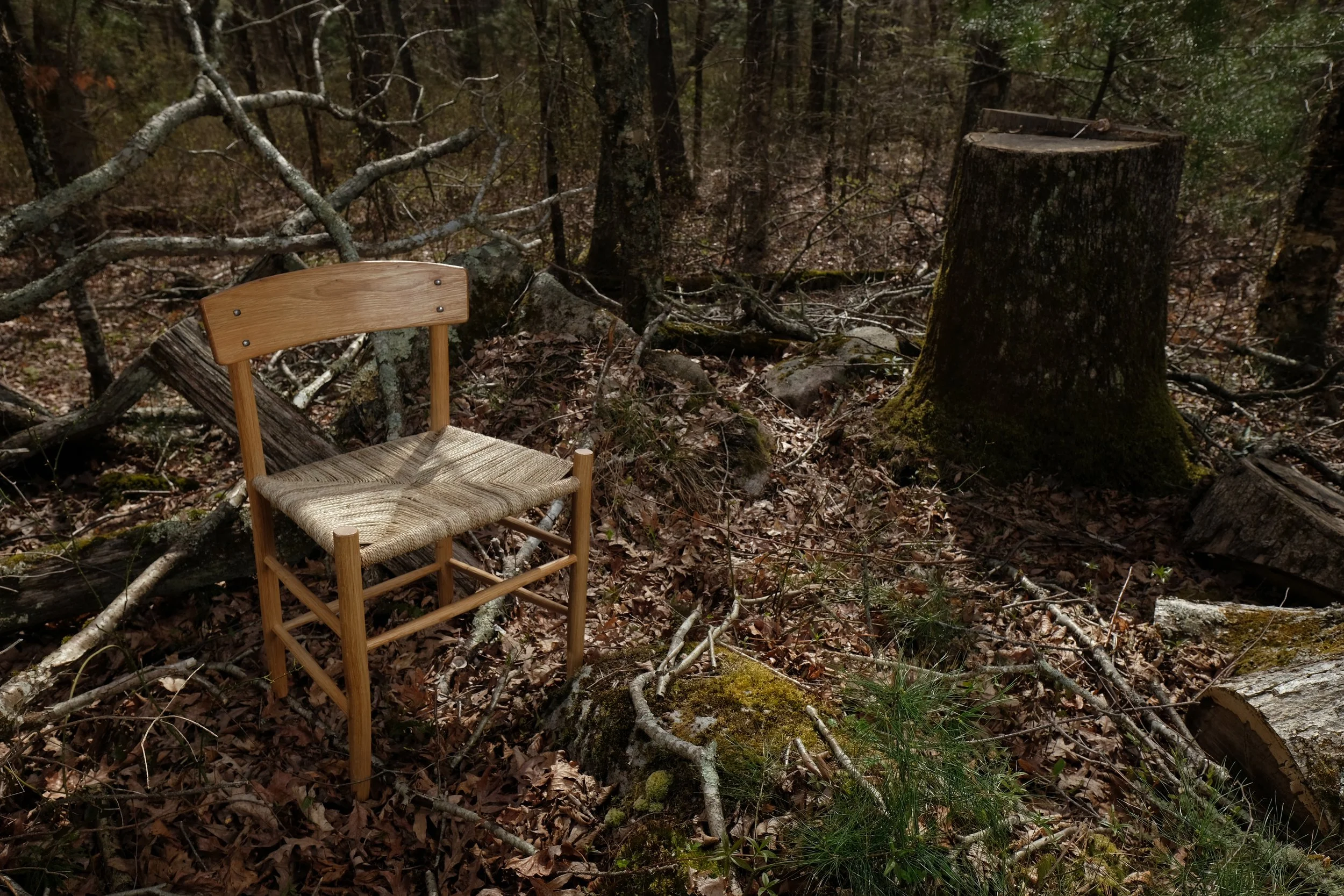Whence It Came_ Kentucky Danish
While the book covers everything from tree selection, all the way through to glueup and seat weaving, it does not have techniques that could be used to attach the backrest to the back posts for a chair such as the J39. The backrest of the original J39 is held in place via screws covered with plugs, the visual artifacts of which are iconic in the chairs appearance.
In the assumption that early chairmakers in Eastern Kentucky Appalachia did not have easy access to screws, I decided to go with a more appropriate approach…clenched nails.
The late Jennie Alexander’s 1978 book, Make a Chair From a Tree, got me started in making chairs from traditional green woodworking techniques. The chair she is pictured with was the subject of much of her life’s work…perfecting the design and the techniques required to make it, and make it last, all while sharing her findings with anyone that wanted to listen.
The influence of Jennie Alexander’s book and subsequent video, Make a Chair From a Tree on green woodworking continues to this day, as exemplified by Lost Art Press’s reissuing of the book, set for 2021.
How would the J39 of 1880 Appalachia look? How would it be made? The techniques used create a chair that is strong, long lasting, light and full of life. Opposed to industry in aesthetic and ethos.
Kentucky Danish, poised next to the stump of the tree from which it came, fallen close to 18 months before this day. The day I met Mike, was the day after he had felled the tree. He doesn’t cut much White Oak he said. I was lucky.
Kentucky Danish by the shavehorse used to hold all of its parts as they were shaved into existence. The shavehorse, the workbench for stick chairs is most often made by its user.
It is made from rived White Oak, steam bent White Oak backrest, clenched nails, hide glue, and…seagrass. I have learned better, and the seat is set to ultimately be rewoven with cattails come next fall when they are ready for the harvesting.



